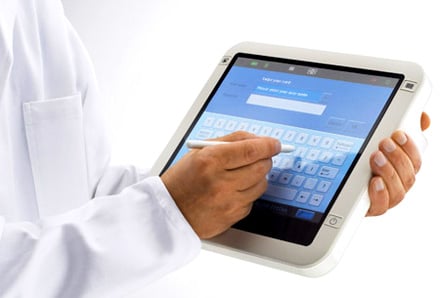
Apple Plans Solar Farm Outside Charlotte
September 25, 2012
What to Look For in A Web Host
September 28, 2012The modern health care industry is growing by leaps and bounds. EMRs (Electronic Medical Records) allow Doctors to access and share confidential patient information within a private setting.
Today’s Doctors use intra-hospital and intra-office networks to access and share files amongst health care providers. Now, doctors can access your medical records from their smartphone. Like any digital device however, a smartphone, can be hacked. So how can you be sure that your Electronic Medical Records are safe and secure? A HiPPA compliant data center or colocation provider will help ease security fears.
HiPPA Compliant Data Centers Increase Security
EMRs are mitigating risk by submitting to an arduous security certification. This certification is known as the Health Insurance Portability and Accountability Act, or HiPPA. HiPPA seeks to mitigate online, digital risk factors. What are those risk factors?

– Misuse of health information records by authorized users of EMR systems
– Government or corporate intrusion into private health care matters
– Hacking incidents on EMR systems that lead to altering of patient data or destruction of clinical systems
– Long term data management concerns surrounding EMR systems
Government Incentives for EMR Adoption
The Obama administration has been promoting the adoption of EMRs across America, by offering incentives to persuade medical practices to make the switch to EMRs. Despite the unproven record of EMRs, doctors are gradually joining the program. Although proper security controls aren’t in place yet at hospitals across the country and a number of systems continue to be breached, a concerted effort is being made to reduce risk
The Drawbacks of Switching To EMRs
Retraining staff:
The overall security policy may not change, but the security protocols of the new software may be somewhat different. As staff learns the new system, it leaves lots of room for error.
Transferring patient information:
Whether you’re currently a Web-based EMR or one installed on site, you’ll have to transfer a lot of information to the new system. What happens if the EMR isn’t encrypted and locked down during or after the transfer?
Backdoor Vulnerabilities:
If your existing installed software has any back-door vulnerabilities in it, they may remain or even become even more deeply buried when the new software is put in place.
Re-establishing Device Security:
Whatever you’ve done to secure mobile devices may have been sufficient for your last system, but what about your new one? Even cloud systems with strong back-end data protections aren’t going to make sure smart-phones and iPads and laptops are secure against security breaches, and you may need to re-do protections for them. Despite security fears, HiPPA and data centers are striving to guarantee the security and privacy of medical records nationwide. Consider this initial step forward for EMRs like a beta test. In a matter of a few years, or maybe even less, EMRs should become as desirable and ubiquitous as iPads and as safe as online banking.

About the author: Jen Thames is a content writer and manager for Activ8me.net.au

